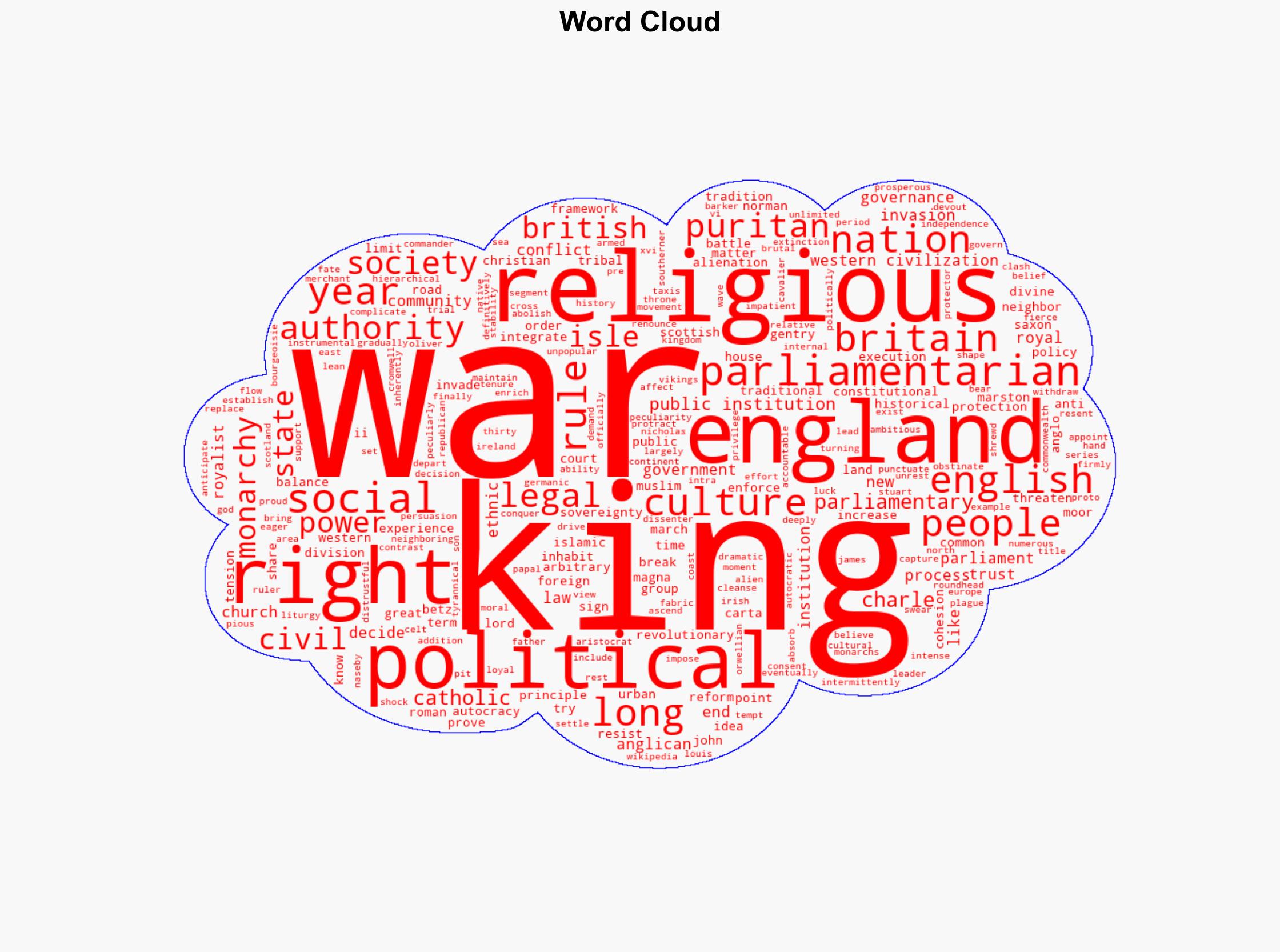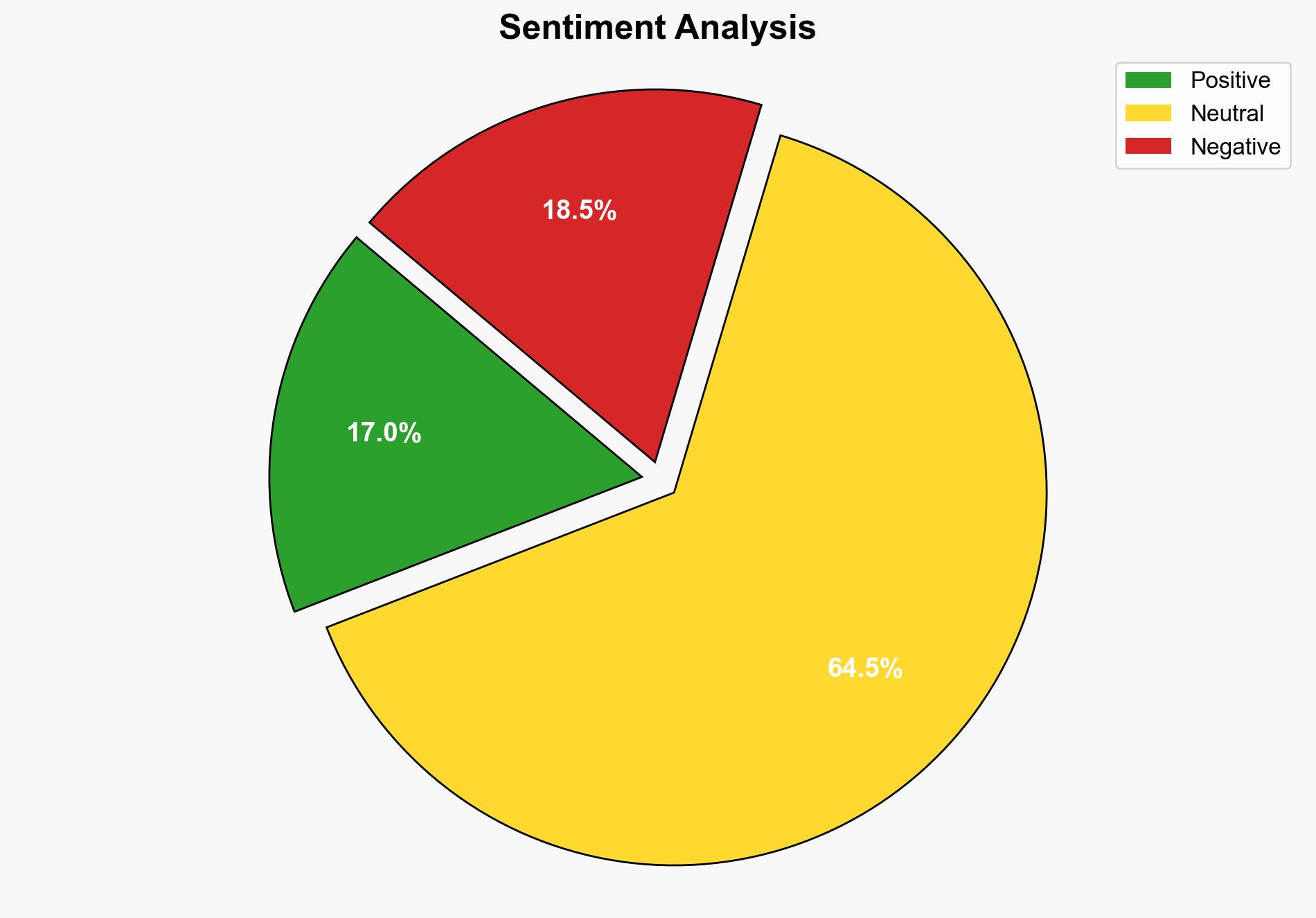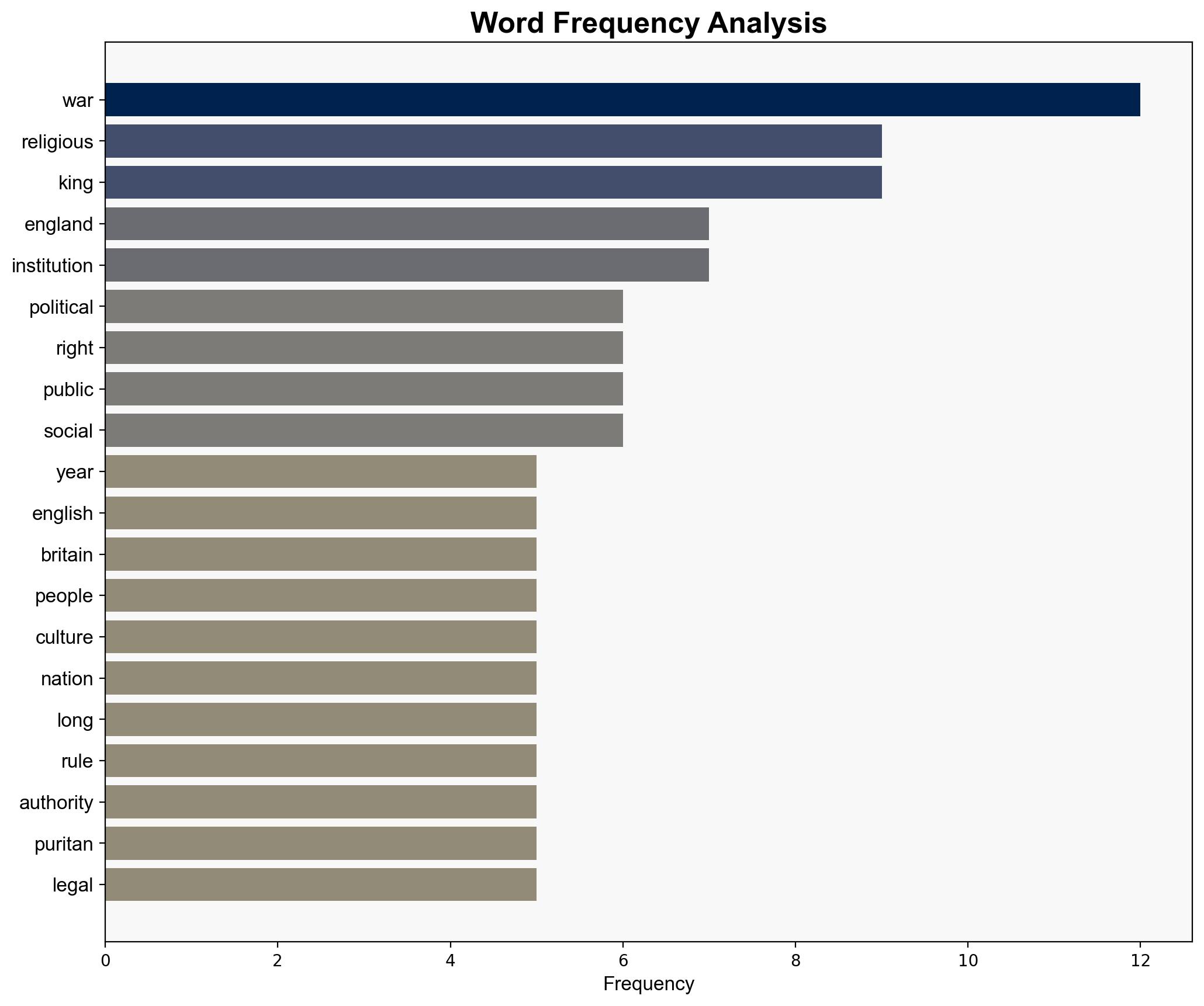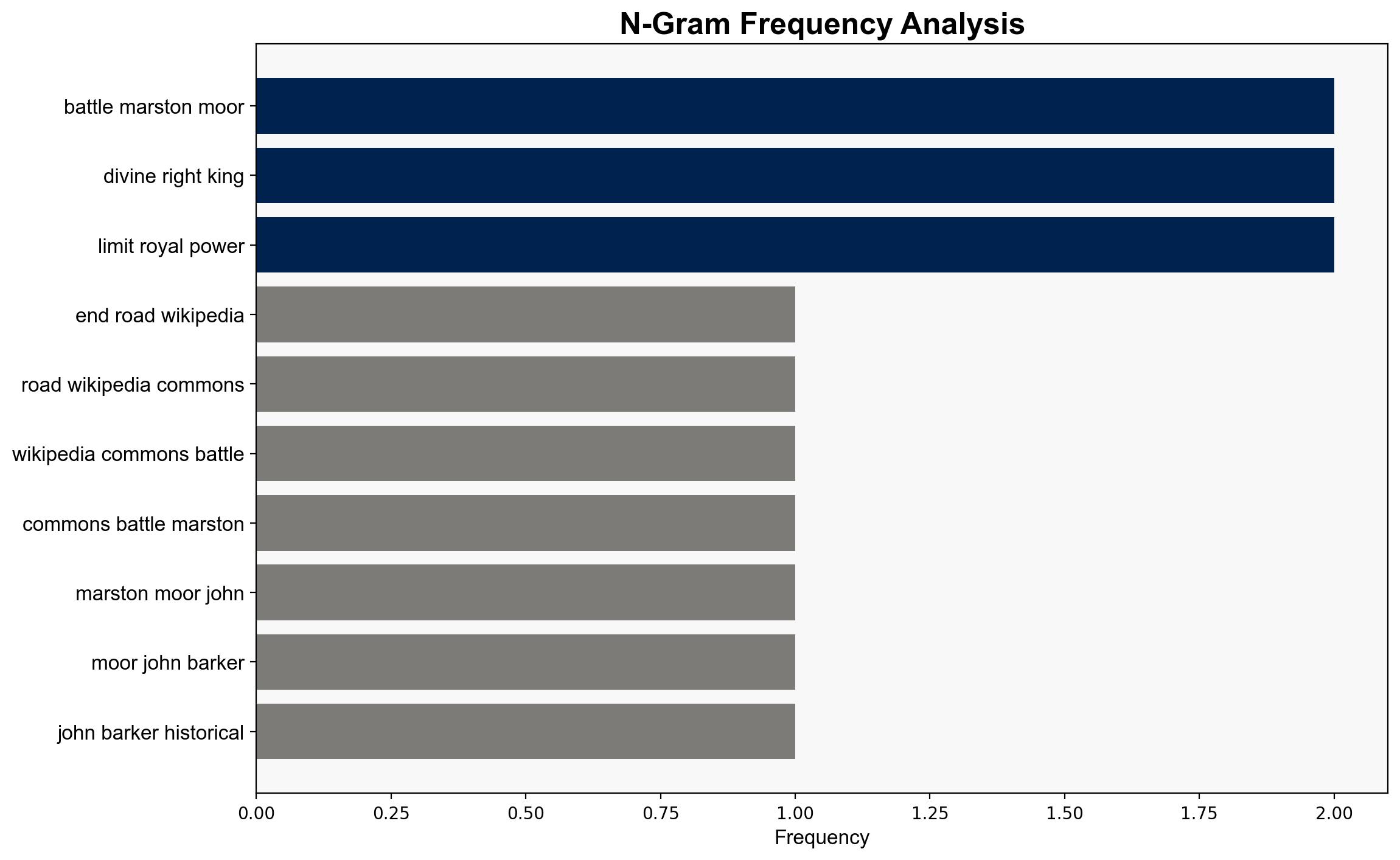At the End of the Road – Americanthinker.com
Published on: 2025-08-23
Intelligence Report: At the End of the Road – Americanthinker.com
1. BLUF (Bottom Line Up Front)
The analysis suggests that the historical narrative of British sociopolitical evolution, particularly during the English Civil War, offers insights into current national identity challenges. The most supported hypothesis is that historical patterns of internal conflict and integration can inform contemporary strategies for managing cultural and political divisions. Confidence in this hypothesis is moderate. Recommended action includes leveraging historical insights to foster national cohesion and address modern sociopolitical fragmentation.
2. Competing Hypotheses
1. **Hypothesis A**: The historical account of British invasions and internal conflicts illustrates a pattern of external threats and internal strife leading to eventual sociocultural integration and political stability. This suggests that current cultural and political tensions in the UK may similarly resolve through integration and adaptation.
2. **Hypothesis B**: The narrative of continuous conflict and external threats in British history indicates a persistent vulnerability to cultural and political fragmentation, suggesting that current tensions may exacerbate without effective intervention.
Using ACH 2.0, Hypothesis A is better supported due to historical precedents of successful integration following conflict, as evidenced by the eventual establishment of parliamentary sovereignty and cultural cohesion post-civil war.
3. Key Assumptions and Red Flags
– **Assumptions**: Hypothesis A assumes that historical patterns will repeat in the present context, which may not account for modern complexities such as globalization and digital communication.
– **Red Flags**: The potential for cognitive bias exists in assuming that past resolutions will apply to current issues without considering unique contemporary factors.
– **Missing Data**: The analysis lacks specific contemporary parallels to historical events, which could strengthen or weaken the hypotheses.
4. Implications and Strategic Risks
– **Patterns**: Historical integration following conflict suggests potential for modern resolution through similar means.
– **Cascading Threats**: Failure to address current tensions could lead to increased polarization and instability.
– **Potential Escalation**: Economic disparities and political discontent could exacerbate divisions, leading to civil unrest or political upheaval.
5. Recommendations and Outlook
- Promote educational initiatives that highlight historical examples of successful integration and adaptation.
- Encourage dialogue and policy-making that address root causes of division, such as economic inequality and cultural misunderstanding.
- Scenario Projections:
- **Best Case**: National cohesion improves through targeted integration policies and historical education.
- **Worst Case**: Increased fragmentation leads to significant political and social unrest.
- **Most Likely**: Gradual improvement with intermittent challenges as historical lessons are selectively applied.
6. Key Individuals and Entities
– Historical figures such as Oliver Cromwell and King Charles I are central to understanding the narrative but are not directly relevant to current strategic actions.
7. Thematic Tags
national security threats, cultural integration, historical analysis, sociopolitical stability





